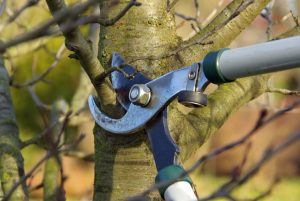Trees are more than just towering figures in our landscapes—they are living organisms that require proper care to thrive. While sunlight and water are essential, trees also depend on a variety of nutrients to grow strong and resist disease. Among these, micronutrients play a crucial yet often overlooked role in overall tree health. At Seraphim, we incorporate prescribed micronutrient fertilization into our Preventative Health Care (PHC) program to ensure trees receive the best care year-round.
What Are Micronutrients?
Micronutrients are essential elements that trees need in small quantities but are vital for their growth and development. Unlike macronutrients such as nitrogen, phosphorus, and potassium, which are required in larger amounts, micronutrients support critical biological functions that keep trees healthy. The key micronutrients for trees include:
- Iron (Fe) – Helps with chlorophyll production, preventing yellowing leaves.
- Zinc (Zn) – Aids in leaf formation and root development.
- Manganese (Mn) – Supports photosynthesis and protects against disease.
- Copper (Cu) – Assists in enzyme activation and improves structural strength.
- Boron (B) – Plays a role in cell wall formation and seed development.
- Molybdenum (Mo) – Essential for nitrogen metabolism.
Even though these nutrients are needed in small amounts, a deficiency can cause significant health problems for trees.
How Micronutrient Deficiencies Impact Trees
When trees lack essential micronutrients, they often exhibit symptoms that indicate stress or declining health. Some common signs of deficiency include:
- Yellowing leaves (chlorosis), especially between veins, often caused by iron or manganese deficiency.
- Stunted growth due to insufficient zinc or copper.
- Leaf curling or browning as a result of boron deficiency.
- Reduced resistance to pests and diseases when essential elements are missing.
Since trees cannot communicate their needs directly, these symptoms serve as important indicators that specialized care is needed.
How Seraphim’s PHC Program Addresses Micronutrient Deficiencies
At Seraphim, we take a proactive approach to tree health. Our PHC program includes soil analysis and tailored fertilization to ensure trees receive the right balance of micronutrients. Here’s how we do it:
1. Comprehensive Tree Assessment
Our process begins with an in-depth tree assessment, where we evaluate overall health and identify any visible signs of stress or nutrient deficiency.
2. Soil Analysis
We conduct soil tests to determine nutrient levels and identify imbalances that could be affecting tree growth. This helps us create a precise treatment plan.
3. Customized Fertilization
Based on our findings, we apply a prescribed blend of micronutrients to replenish what’s missing. This ensures your trees get exactly what they need to thrive.
4. Ongoing Monitoring & Adjustments
Tree care isn’t a one-time fix—it requires ongoing attention. We continue monitoring soil conditions and tree health throughout the seasons, making necessary adjustments to maintain optimal growth.
Why Choose Professional Tree Care?
Many homeowners attempt DIY tree fertilization but often struggle with getting the right balance of nutrients. Over-fertilization or using the wrong products can cause more harm than good. By working with Seraphim, you ensure your trees receive expert care backed by years of experience in tree health management.
Keep Your Trees Thriving with Seraphim
Healthy trees enhance property value, improve air quality, and provide shade for generations. Don’t leave their care to chance—partner with Seraphim for professional tree health management. Whether you suspect a nutrient deficiency or simply want to maintain your trees’ vitality, our team is here to help. Contact us today to schedule a tree assessment and learn more about how our PHC program can benefit your landscape!







